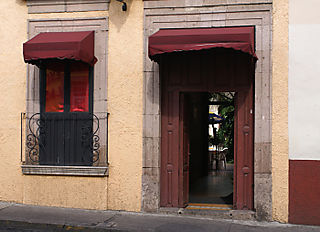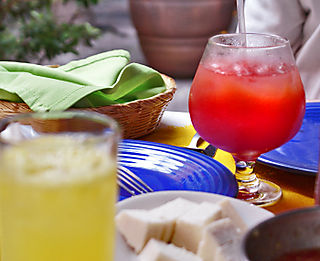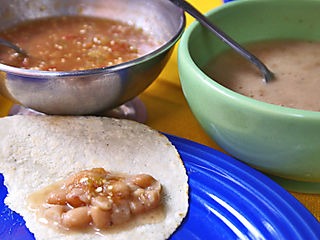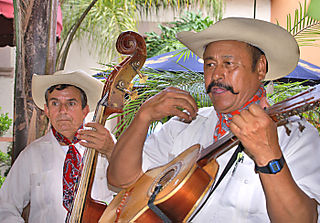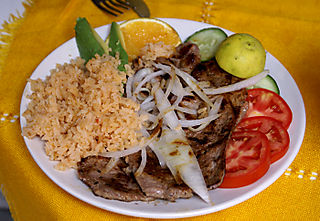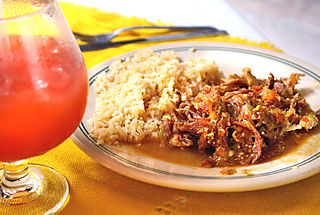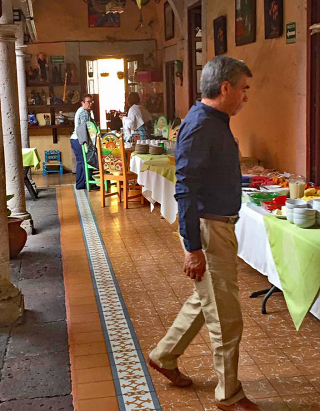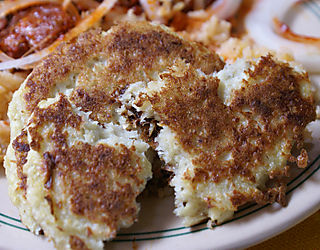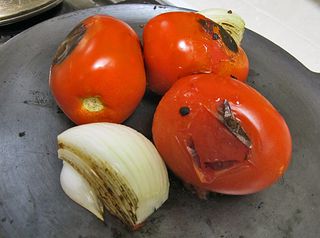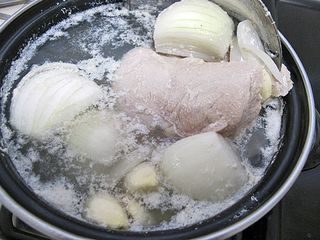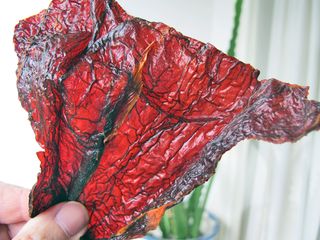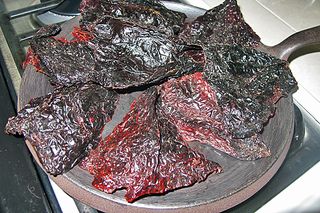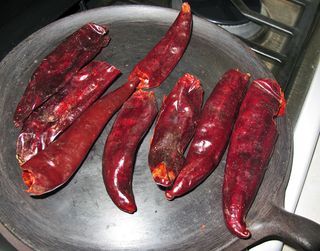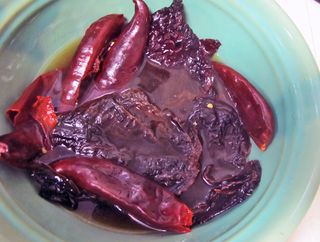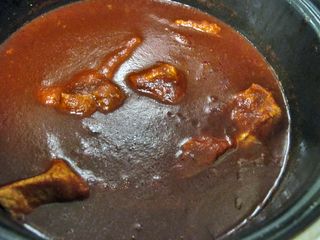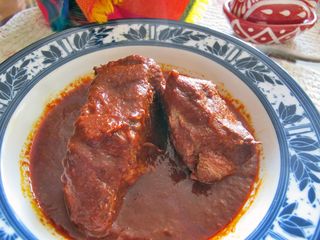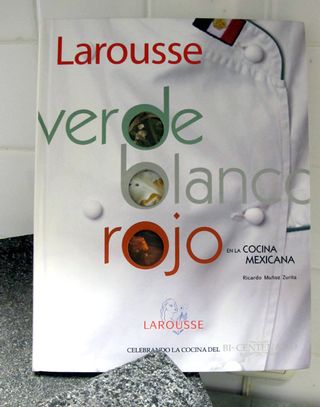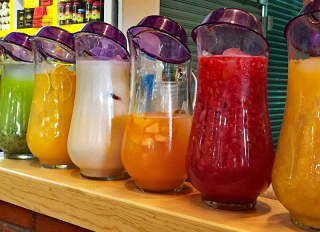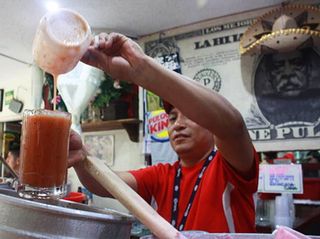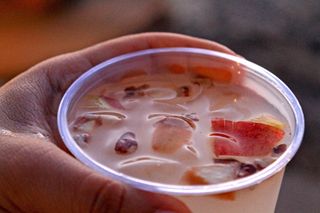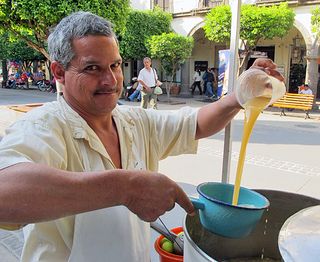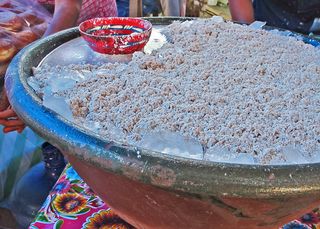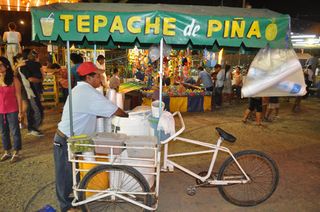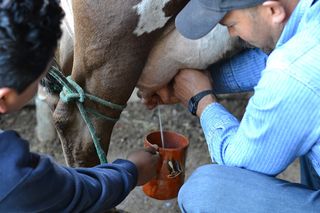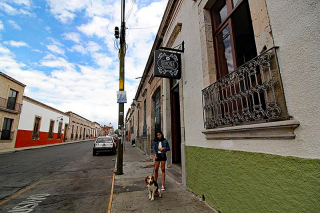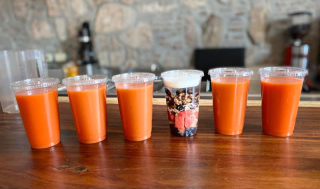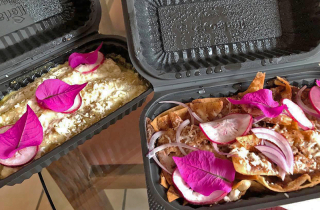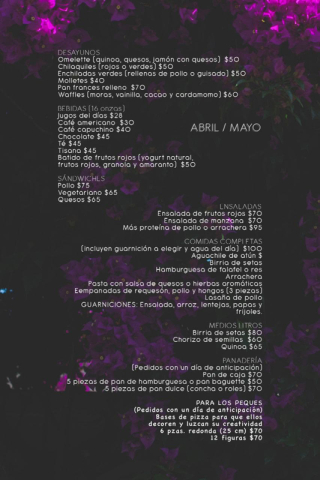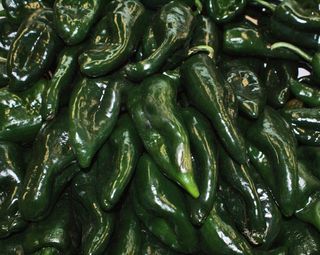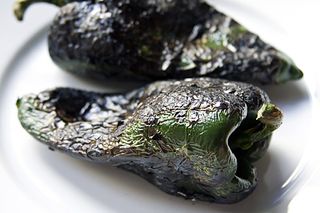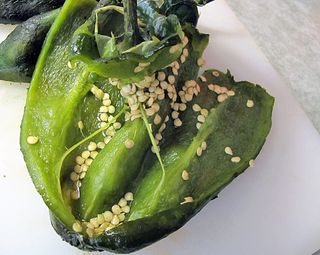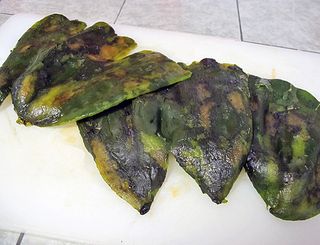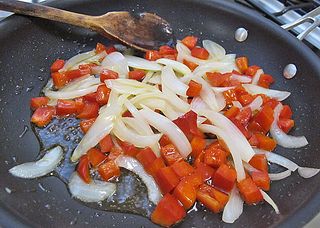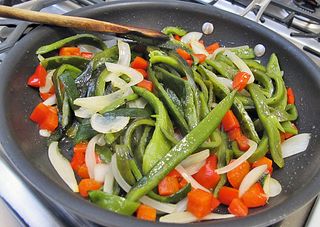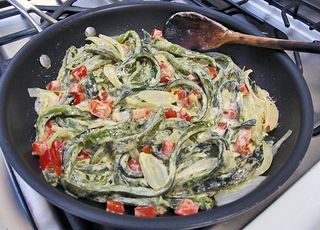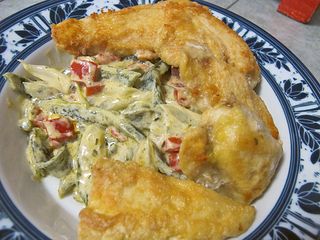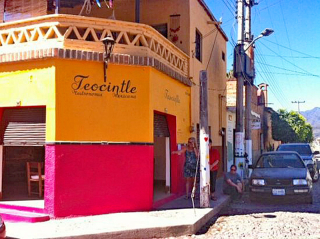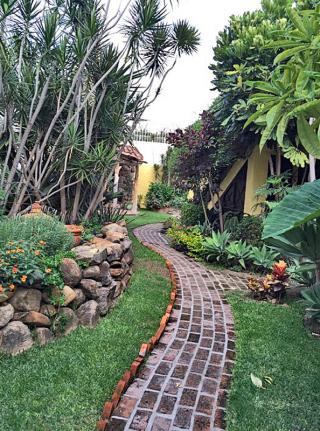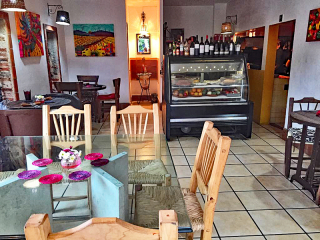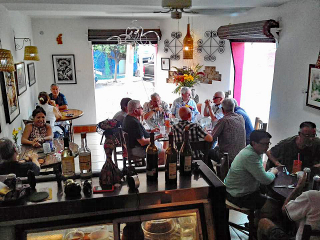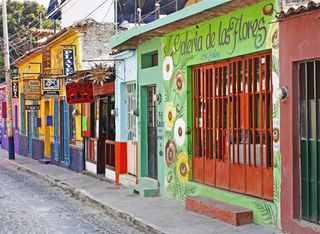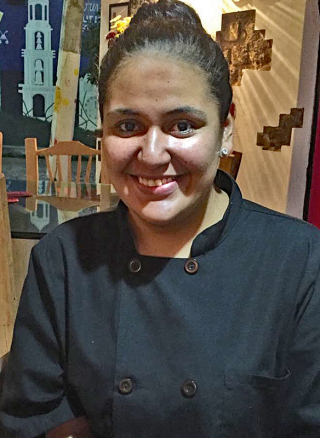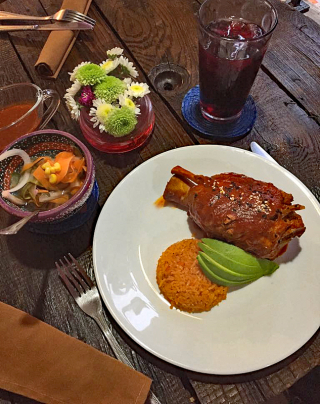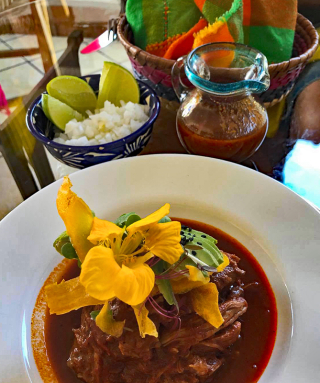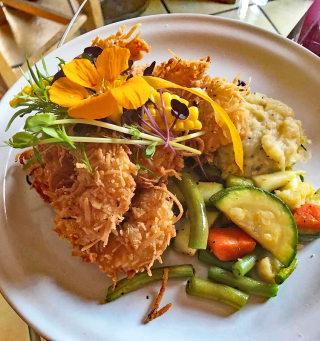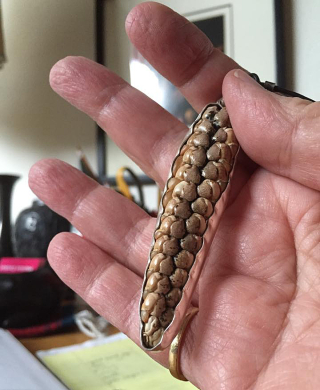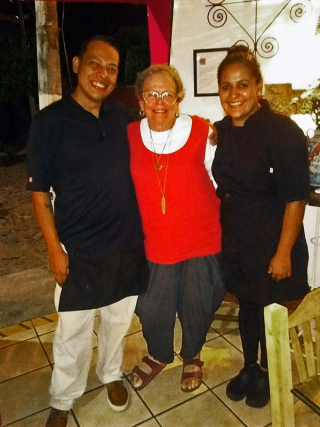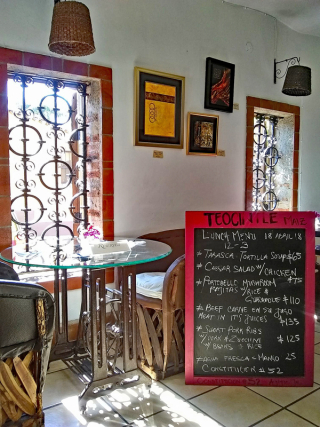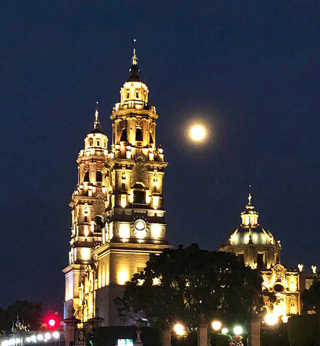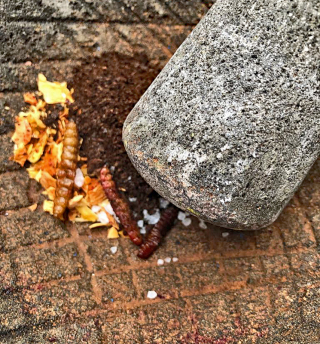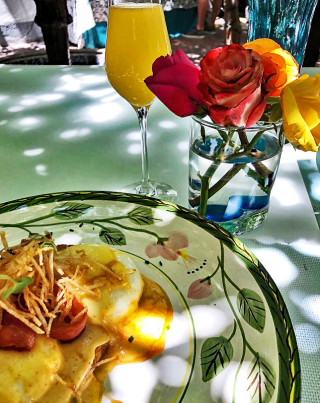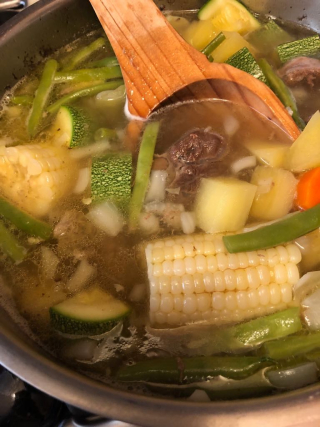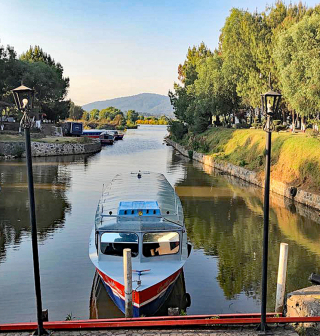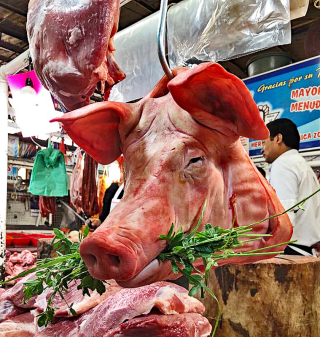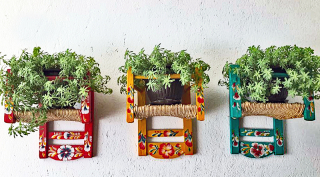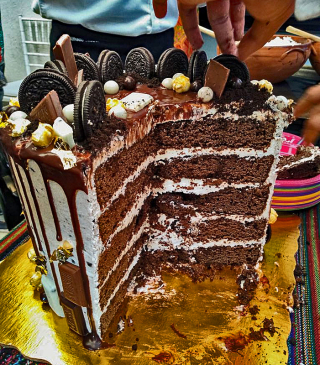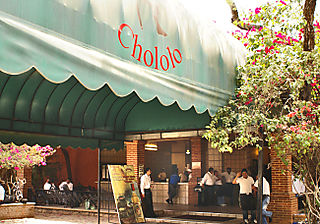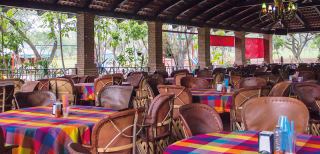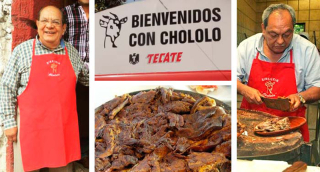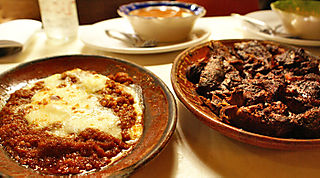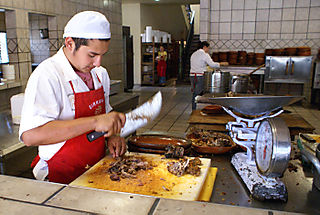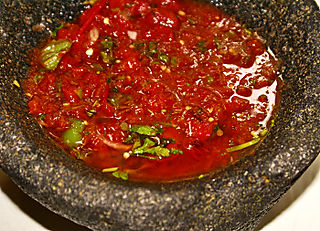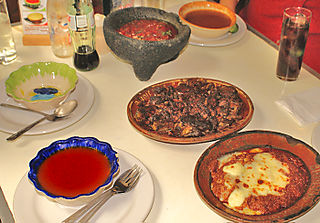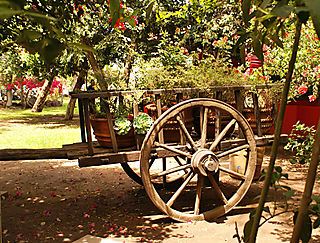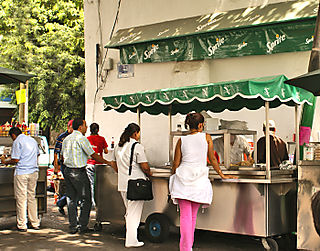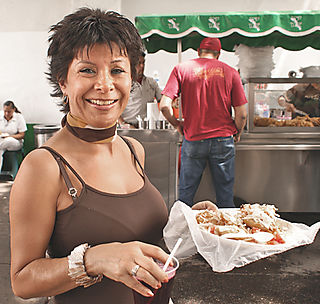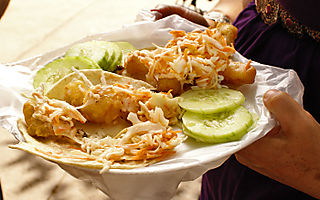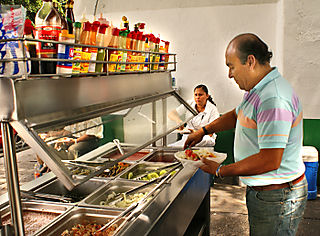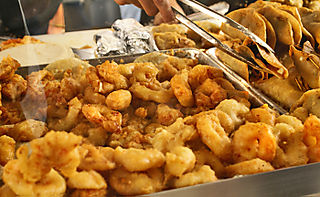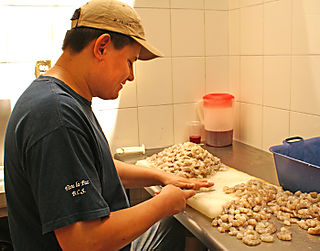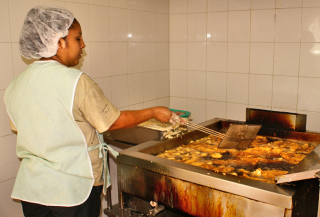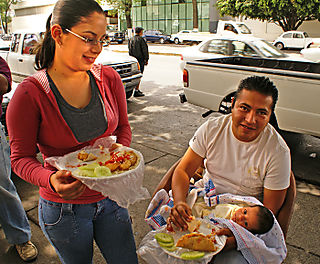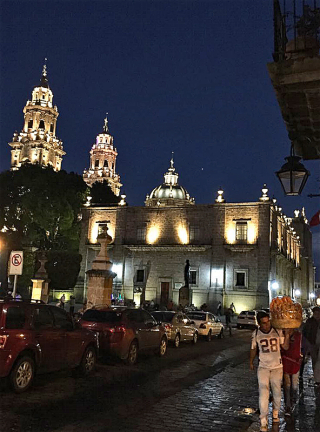
In the evening, when you're relaxing at La Conspiración outside under the portales (arches), you can easily see the sky-high towers and the blue dome of the Cathedral–illuminated by soft white lighting, the lovely view will take your breath away. All photos by Mexico Cooks! unless otherwise noted
For the last nearly 15 years, chef Cynthia Martínez, the chef and inspiration behind Restaurante La Conspiración de 1809, has been a close friend. Her husband, Roberto González–in charge of the front of the house–makes sure your experience at their restaurant is extraordinary, from the time you approach the hostess near the door until your "Hasta la próxima," (See you next time!) farewell. Your meal–whether desayuno (breakfast), comida (Mexico's mid-afternoon main meal), or cena (Mexico's late evening supper)–is always beautifully prepared, temptingly plated, and elegantly served. Forced to close due to Morelia's lockdown for Covid-19 prevention, the restaurant has recently re-opened. New to the menu are its extraordinary breakfasts; I've breakfasted twice at La Conspiración since its early June re-opening and will return in the next week or two–the dishes are that good!
Among my favorites on the new breakfast menu are the eggs Benedict, the Croque Monsieur, and the enfrijoladas. The enfrijoladas, their bean sauce flavored Oaxaca-style with the subtly anise flavored dried native Mexican avocado leaf, are arguably the most popular breakfast dish on the menu.
Right now, most restaurants in the world are under tremendous financial pressure to survive, due to Covid-19. Restaurante La Conspiración is battling the same consequences. If you live in Morelia, or if you visit here regularly, be assured that the restaurant maintains all recommended health guidelines for protecting its customers: masks and/or face shields for the wait staff, extreme attention to cleanliness of all furniture, dishes, and anything else a customer might touch, and available antibacterial gel for hands of staff and customers alike.
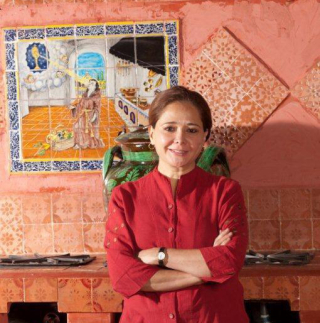
The marvelous chef Cynthia Martínez, the guiding light (and the guiding hand) in the kitchen at La Conspiración. Photo courtesy La Conspiración.

Really hot, steaming hot chocolate, traditionally made with Michoacán's chocolate de metate (stone-ground chocolate) with boiling-hot water rather than milk, is my favorite breakfast beverage at La Conspiración. I have to start my morning with coffee at home, just so I can move on to drink the hot chocolate at the restaurant. Photo courtesy La Conspiración.

Tablets of freshly stone-ground chocolate de metate, each one ready to be melted into a delicious cup of hot chocolate.
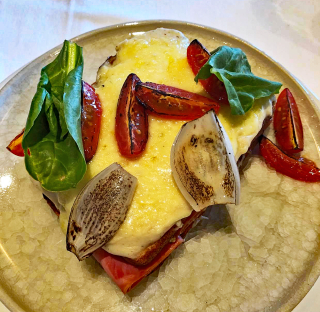
The croque monsieur at La Conspiración. A sandwich stuffed with ham, covered with bechamel sauce, and topped with baby spinach, comal-roasted onion quarters and grilled grape tomatoes, this will definitely get you going on your day.
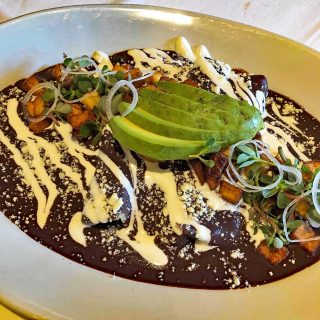
Here are the enfrijoladas I mentioned earlier. The plate is filled with three tortillas, dipped in bean sauce to become enfrijoladas, crammed with shredded chicken and topped with more bean sauce–plus a good-sized portion of fried plantain cubes, that avocado fan, little sprouts, and heavenly Mexican table cream! The sauce has its origins in Oaxaca, where dried native avocado leaves are blended with freshly cooked black beans to become a silky delight. Luisa and I split the enfrijoladas and the croque monsieur and were hard-pressed to finish each of our half-portions. But–ahem–we managed.
Note to Mexico Cooks! readers: the avocado most commonly seen outside Mexico is the Hass, a California hybrid avocado, and unfortunately the leaves of the Hass are flavorless and useless to make this sauce.
Another note: when you're making or ordering this sort of dish, remember the following:
–the tortillas for enchiladas are dipped in a chile sauce
–the tortillas for enfrijoladas are dipped in a bean sauce
–the tortillas for entomadadas are dipped in a tomato sauce
–the tortillas for enmoladas are dipped in–mole!
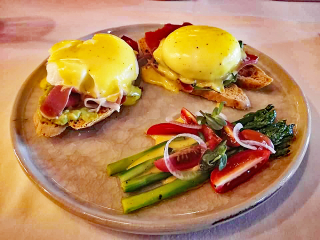
This lovely plating is the huevos benedictinos (eggs benedict) that Luisa and I shared on our second breakfast visit. The eggs were perfectly poached, the iberico ham completely tender, and the sauce–oh my, the sauce was lemony perfection. The icing on the cake, so to speak, was the serving of wonderful just-tender asparagus, grown right here in Michoacán. Photo courtesy La Conspiración.
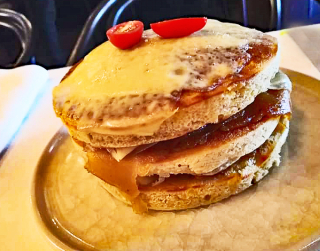
The other dish Luisa and I shared on our second breakfast visit to La Conspiración: hotcakes de elote (tender corn hotcakes). They're offered in two options: the first with ate (a fruit paste) and cheese, and the second with house-made jams. We took the jam option and were so delighted with these unusual and delicious hotcakes! And yes, it's the same word in both English and Spanish.
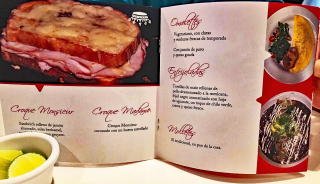
Part of the breakfast menu at La Conspiración.

In case you're concerned about safety and Covid-19 related regulations, have the greatest confidence that La Conspiración is taking all necessary precautions to make sure that both diners and staff are protected. If you live
in Morelia and are looking for a beautiful, comfortable, and delicious option for breakfast (or comida, or cena), by all means join Cynthia and Roberto and their team for a wonderful, relaxing meal. Open seven days a week, you'd love it tomorrow–Sunday! Tell them Mexico Cooks! sent you. In addition, any meal is also available for takeout or delivery.
La Conspiración Restaurante y Cantina
Portal Allende #209
Centro Histórico
Morelia, Michoacán
Reservations or Take-Out Service: 443 1580 0443
Hours:
Sunday – Thursday 8:00AM – 11:00PM
Friday and Saturday 8:00AM – Midnight
Looking for a tailored-to-your-interests specialized tour in Mexico? Click here: Tours
